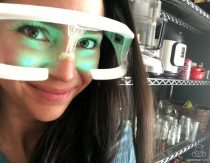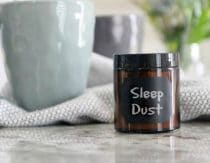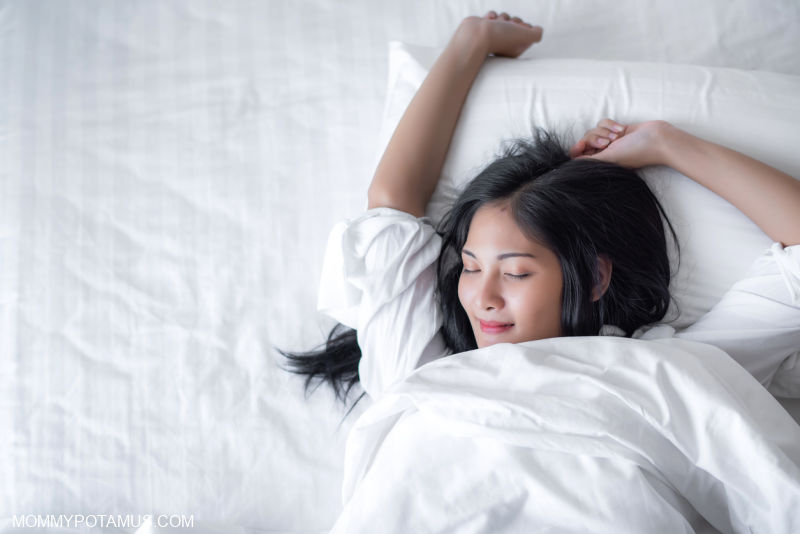
If you’ve ever turned on a white noise machine to drown out the sound of barking dogs, loud neighbors, or other disruptive sounds, you know how helpful they can be for falling (and staying) asleep. And that’s a good thing, because getting deep sleep makes us smarter, happier, more productive, more creative, and even keeps us looking younger. (1) (2) (3) (4) (5) (6)
White noise isn’t all shooting stars and moonbeams, though. In fact, it may actually make you feel more stressed over time, even if you don’t realize it’s causing an issue. Fortunately, with one simple tweak you can get all the benefits of white noise without the downsides, and in this article I’ll explain how.
We’ll dive into what you need to know about the different colors of noise – particularly white, pink, and brown – soon, but first I want remind you that none of these statements have been evaluated by the FDA, this article is not medical advice, and it is not meant to diagnose or treat any condition. Now that we’ve got that out of the way, let’s dive in.
Ready for a quick self-experiment?
Without analyzing things too much, click play and watch this video. No skipping ahead, okay? This guy has been covered by Harvard, Tufts University, CNN, the New York Times and more.
You bobbed your head at least a little, didn’t you? It’s okay, this is a safe place. I won’t tell.
Here’s the thing, though, your response isn’t necessarily due to your love (or lack thereof) of the Backstreet Boys. In Healing At The Speed Of Sound, authors Don Campbell and Alex Doman explain why:
Aside from songbirds, humans are the only creatures that automatically feel the beat of a song, according to Nina Kraus, a professor of neurobiology at Northwestern University. Music entrains our bodies – physically by activating the muscle-control centers of our brains that get us moving to the rhythm, and emotionally by guiding our moods into synchronicity with its own tone.”
That last part about guiding our moods describes one of the most fascinating aspects of brain entrainment, or how our brains mirror the sounds around us. When the sounds are meaningful and beautiful, our brains become more organized and integrated. When the sounds are chaotic and stressful, our brains struggle with basic functions.
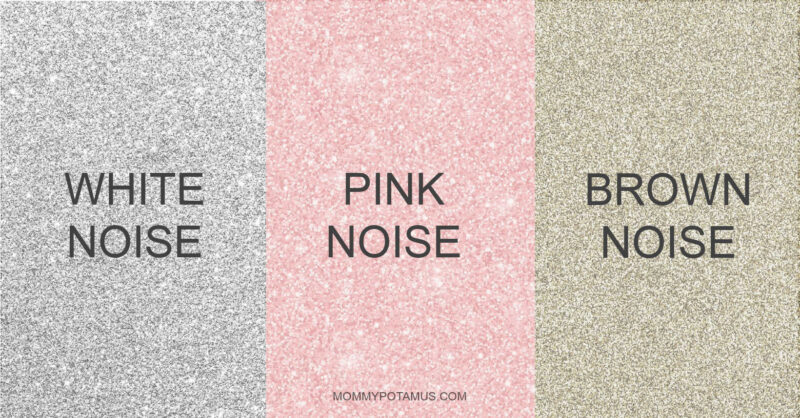
The Colors of Noise
For most of us, it’s not really sound itself that keeps us from falling asleep or wakes us up during the night – it’s abrupt changes in sound like a car alarm going off or the crack of lighting. Sound machines help by creating a cushion of sound that muffles the effects of those noises.
Though we typically call these machines “white noise machines,” there are actually several colors of noise with different biological effects.
White Noise
If you’re like me, you’ve probably always equated white noise with the sound of rain, or waves, or some other sound in nature. Interestingly, it’s not natural at all, and therein lies the problem.
White noise is actually machine-generated static that combines all the frequencies we can hear – about 20,000 tones – into one sound.
What you get is not the sound of rustling leaves or crashing waves, but a wall of static that blocks other sounds.
Of course, few of us (if any) can relax to the sound of scratchy static generated by a radio, or any other form. White noise manufacturers know that, so they embed the static within sound clips of waves or rain to make it more palatable. Though it seems like a sensible solution, research suggests it may have a downside:
White Noise Increases Cortisol Levels
White noise “has equal power across all frequencies,” meaning that the wall of sound contains both high-pitched and low-pitched frequencies. (7) High-pitched frequencies are like salt in a chocolate chip cookie recipe – a little makes the flavors pop, but a lot ruins the experience.
In fact, too much isn’t just unpleasant, it’s downright stressful. (8) According to this Scientific American article:
Several studies have indicated that stress resulting from ongoing white noise can induce the release of cortisol, a hormone that helps to restore homeostasis in the body after a bad experience. Excess cortisol impairs function in the prefrontal cortex—an emotional learning center that helps to regulate ‘executive’ functions such as planning, reasoning and impulse control. Some recent evidence indicates that the prefrontal cortex also stores short-term memories. Changes to this region, therefore, may disrupt a person’s capacity to think clearly and to retain information.
Though not definitive, recent research also suggests that noise-induced stress may decrease dopamine availability in the prefrontal cortex, where the hormone controls the flow of information from other parts of the body. Stress resulting from background noise, then, may decrease higher brain function, impairing learning and memory.”
So what explains this effect? One theory is that our brains are hardwired to interpret meaningful noise rather than static. According to Campbell and Doman, “Certain sounds, provided in the right context and combinations, can organize our neural activity, stimulate our bodies, [and] retune our emotions.”
When the sounds grow “more coherent – sounding more like a real melody – different parts of the brain interact in a more intense and consistent, or coherent, manner.” In contrast, when confronted with a disorganized sound, “your brain creates a stress response that can include a rise in blood pressure and shallow breathing.”
According to this perspective, even though we don’t hear the static underlying white noise consciously, our auditory processing centers do and they do their best to filter that into meaningful information for us. However, since our brains are not optimally wired to interpret static, it may leave us with the stress of constantly trying to figure out what we’re hearing on a subconscious level.

Pink Noise
If you’ve ever been lulled by the sound of crashing waves or rustling leaves, you’ve experienced the magic of pink noise. Like white noise, it contains every frequency the human ear can hear, but not all have equal intensity. The lower frequencies are more prominent and the higher frequencies are less intense, which creates an effect that’s less like abrasive static and more like soothing rain.
Unlike white noise, which has been shown in some studies to increase cortisol levels, research suggests that pink noise may have positive biological impacts on sleep quality and memory. For example, this study done with older adults found that pink noise increased slow wave sleep, also known as deep sleep.
Slow-wave sleep (SWS) is the phase of sleep in which memories are transferred from temporary to long-term storage. This process, called memory consolidation, is dependent on getting enough deep sleep. (9)
Another study done with young adults who took a daytime nap while listening to pink noise found an improvement in sleep quality and memory. Several additional studies have found benefits, but many have been relatively small and more research is needed to fully understand the potential benefits. (10) (11) (12)
Brown Noise
Brown noise emphasizes lower frequencies than pink noise . . . think rumbling thunder or the low roar of a large waterfall. There’s not a lot of research on its biological effects, but some people find it relaxing and sound machines sometimes include it as a setting option.
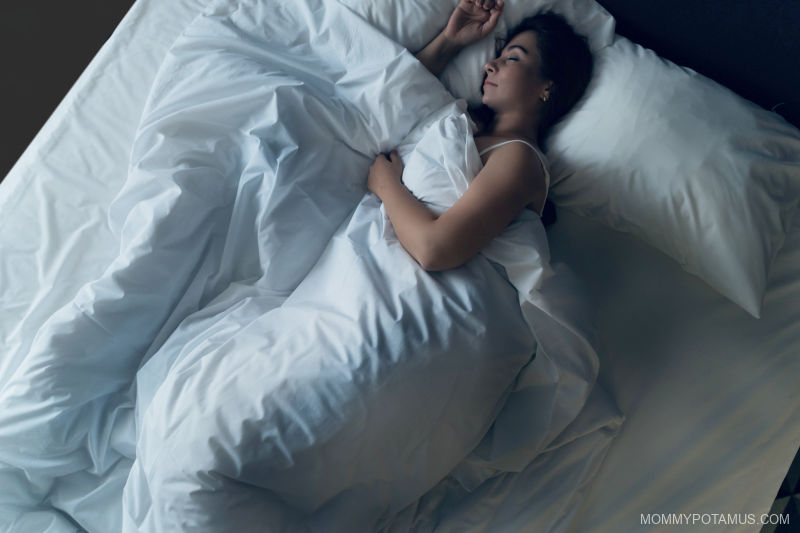
Choosing A Sound Machine
There are several apps that will allow you to play pink noise on your phone, but if your speakers aren’t awesome the sound quality probably won’t be, either. When shopping for a sound machine, here are some specific features that I would look for:
No Bluetooth or Wifi – I would avoid “smart” options in order to minimize EMFs in the bedroom.
Dim display or lights that can be turned off completely – Avoid any options that have a bright blue or green display because blue light at night can impair melatonin production.
Non-Looping – Some sound machines use a soundbite, like a five-second clip of ocean waves/rain/etc. played on a loop. In nature, nothing repeats on a five-second loop for eight hours straight, which got me wondering what kind of effect this might have.
According to this study published in the American Journal of Physiology, sounds have as much impact on our circadian rhythms as light. Could exposure to a repetitive 5-second clip throughout the night disrupt our internal biological rhythms? At this point, we don’t have any studies on that, but research does suggest that looping sounds do stress our brains out on a subconscious level . . . sometimes even on a conscious level, too. I’d look for a sound machine that is non-looping since that’s what’s found in nature.
Timer Vs. Manual Shutoff – Some sound machines run for a set period of time and then turn off, while others can be set to run until you manually turn them off. Many have both options, but not all do, so make sure that the sound machine you choose has the right option for you.
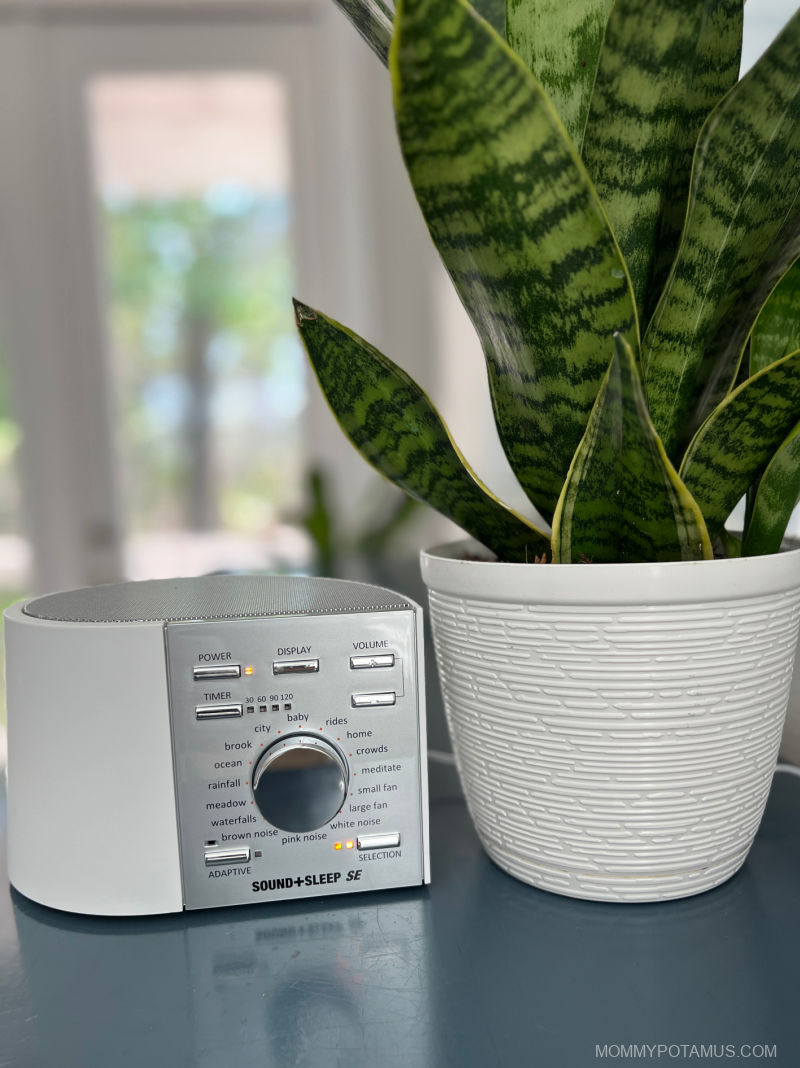
My Top 3 Sound Machine Recommendations
Based on the checklist above, the best sound machines I’ve found are:
1. Sound + Sleep SE
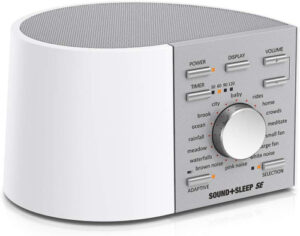
With 64 settings, the Sound + Sleep SE pretty much has it all.
Most of the settings are natural sounds that have been recorded in the environment – a few are fan sounds and such – but you won’t find any annoying or abrupt noises within the real-life recordings.
That’s because after the initial recording, a musician teases everything out to find the purest sounds, then writes a score with it. However, unlike most scores that are the same every time, the Sound + Sleep SE spontaneously composes these sounds in fresh ways so that there are no repeating loops.
Here are some other reasons to consider it:
- It has an adaptive microphone, which means that if your environment gets louder it will increase volume to mask it.
- There are a range of pink and brown noises to try. For example, the water sounds are mostly brown noise with a little pink sprinkled in, and the plane setting is on the higher end of pink (close to white) which can be helpful for tinnitus.
- The front panel dims so you’re not getting loads of circadian-disrupting light at night.
- Can play continuous sound all night, but also comes with an optional timer that can be set for 30, 60, 90 or 120 minutes.
Click here to check out the Sound + Sleep SE
2. LectroFan Evo
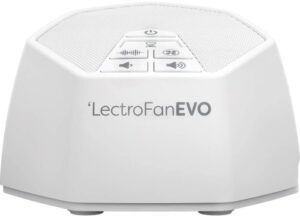
The LectroFan Evo has been around a long time and is one of the most respected manufacturers of high-quality (but affordable) sound machines. It creates a variety of different fan sounds, but it also creates a couple of ocean sounds, too.
The ocean sounds are a combination of waves and wind – the wave sounds are more pinkish, while the wind and fan sounds are mostly brown noise.
There are also ten sounds that range from pink to brown to white, PLUS ten fan sounds.
If you’re thinking “Fan sounds, as in plural? How many types of sounds can there really be?” – the answer is a lot. There are chuff sounds (blades hitting the air), the deep sound of air blowing, the hum of the motor, and more. If you’ve ever been lulled to sleep by the sound of a fan, chances are they have one that pretty closely matches it.
Like the Sound + Sleep SE, the LectroFan Evo is non-looping and can either play all night or for a specified period (30, 60, 90, or 120 minutes).
Click here to check out the LectroFan Evo
3. Honeywell Dreamweaver Sleep Electric Tower
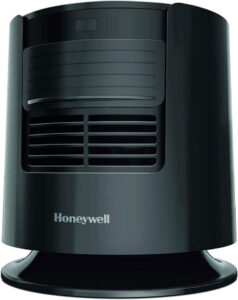
If the steady hum of a fan is your jam, the Honeywell Dreamweaver Sleep Electric Tower Fan with Pink Noise comes with three settings AND it can be operated with or without airflow.
In other words, it can be used as a cooling fan in the summer months, but in cooler months you can shut off the airflow to keep your room warmer. The Dreamweaver also comes with dimmable lights, a USB charging port, and an optional timer.
Click here to check out the Honeywell Dreamweaver Sleep Electric Tower Fan
Want more research-backed natural remedies?
No problem, I’ve created a free ebook for you – Kitchen Apothecary: 25+ Natural Remedies Using Ingredients From Your Pantry – as a gift for signing up for my newsletter. You’ll also get updates when I post about safe essential oils for pregnant/breastfeeding mamas, exclusive gifts and coupons (I was able to give away a jar of free coconut oil to anyone who wanted it recently!), plus other goodies.
Sign up using the form below.
This article was medically reviewed by Madiha Saeed, MD, a board certified family physician. As always, this is not personal medical advice and we recommend that you talk with your doctor.
Sources
1. Scientific American (2008) Sleep On It: How Snoozing Makes You Smarter
2. PBS (2012) Can Sleep Make You Smarter?
3. BBC (2013) How Sleep Makes Your Mind More Creative
4. American Psychological Association (2014) Sleep Deprivation: More Sleep Would Make Most Americans Happier, Healthier and Safer.
5. Stump, Scott (2013) “Nap Rooms” Encourage Sleeping On The Job To Boost Productivity
6. Harris, Shelby (2013) Sleep and Longevity: 5 Ways Sleep Keeps You Young
7. Lecher, Colin (2014) Why Does White Noise Help People Sleep?
8. Kumar, Sukhbinder et. al. (2012) Features versus Feelings: Dissociable Representations of the Acoustic Features and Valence of Aversive Sounds
9. Diekelmann, Susanne and Born, Jan (2010) Slow-wave sleep takes the leading role in memory reorganization
10. Papalambros, Nelly et. al. (2019) Acoustic enhancement of sleep slow oscillations in mild cognitive impairment
11. Zhou, Junhong et. al. (2012) Pink noise: effect on complexity synchronization of brain activity and sleep consolidation
12. Ngo, Hong-Viet V. et. al. (2013) Auditory Closed-Loop Stimulation of the Sleep Slow Oscillation Enhances Memory

